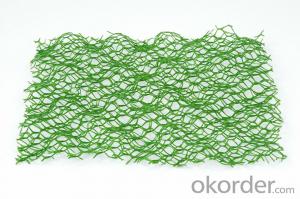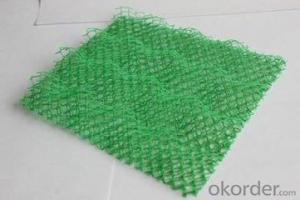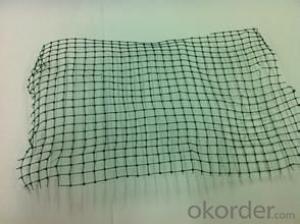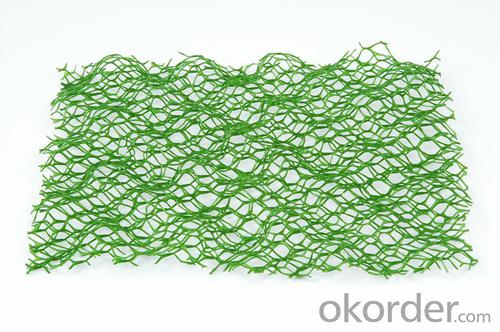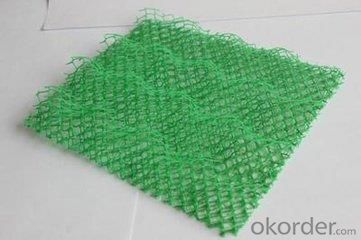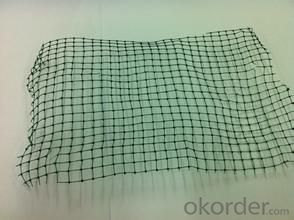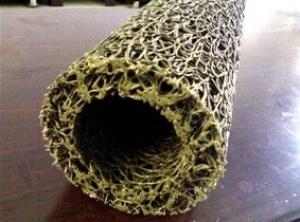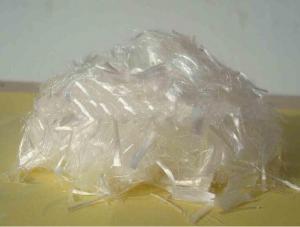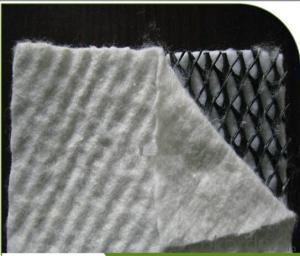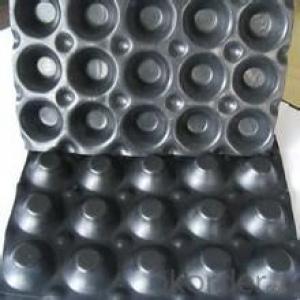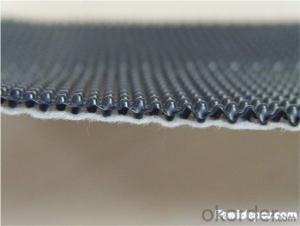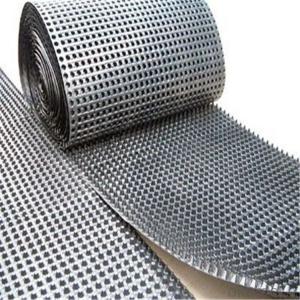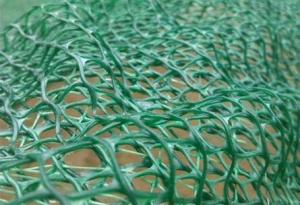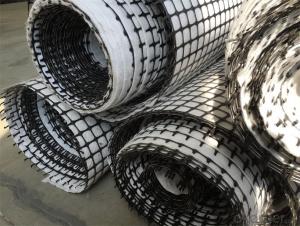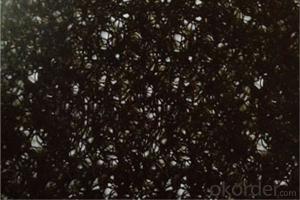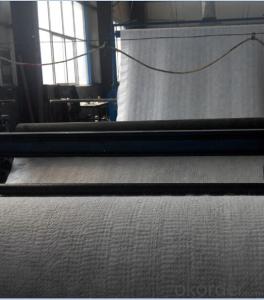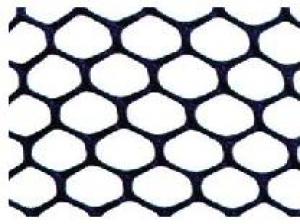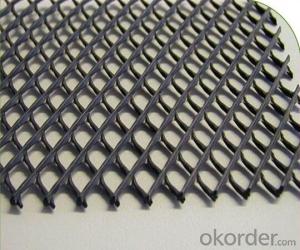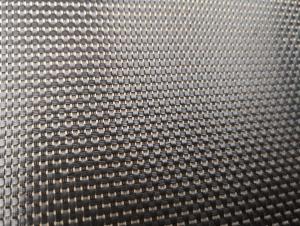CMAX Longitudial tensile, Horizontal Tensile, Geomat Three Demensional Geomat
- Loading Port:
- Tianjin
- Payment Terms:
- TT OR LC
- Min Order Qty:
- 2000 m²
- Supply Capability:
- 900000 m²/month
OKorder Service Pledge
OKorder Financial Service
You Might Also Like
Specifications
1)3D geomat(Erosion control mat)
2)Polyethylene (PE)
3)Tensile strength:0.8 ~ 3.5kn/m.
4)220-480g/m2
5)thickness:10~20mm
3D Mat (Erosion control mat) Characteristics:
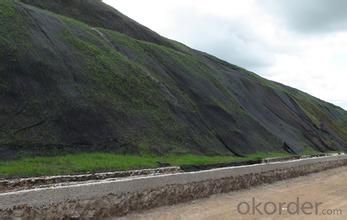
It is a kind of 3D structural geosynthetic , which is applied to keep the water and land, increase the greening area, and improve the environment.
Function:
1.Before the greensward grows, it prevents the surface of the land from the erosion of the wind and rain.
2 .Form compound protection layer with the vegetable, standing the wash-out of the high water level and large speed current.
3.Replace the concrete, asphalt, and block, using in the slope surface protection of roadway, railway, river-way, dyke, and the hillside, etc.
Specification of 3D Mat (Erosion control mat)
Item Spec | EM2 | EM3 | EM4 | EM5 |
Weight per sq.m. ≥(g/m2) | 220 | 260 | 350 | 430 |
Thickness ≥(mm) | 10 | 12 | 14 | 16 |
Width≥(m) | 2 | |||
Length ≥(m) | 30 | |||
Vertical tensile strength ≥(KN/m) | 0.8 | 1.4 | 2.0 | 3.2 |
Horizontal tensile strength ≥(KN/m) | 0.8 | 1.4 | 2.0 | 3.2 |
Remark | The special spec or size can be manufactured according to the demands of the contract | |||
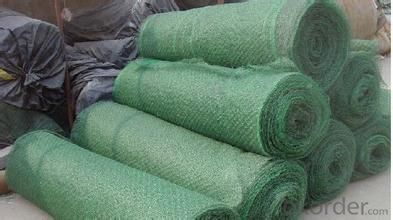
Packaging & Shipping
Packaging Detail: | as your desire |
Delivery Detail: | 15 days after your order |
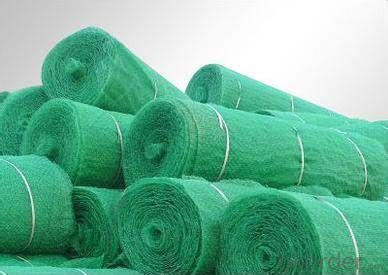
F&Q
Q: Can you accept sample order?
A: Yes, we accept samples with little and reasonable charge.
Q: What is your MOQ?
A: Normally, 5000 m2 per order.
Q: What is your delivery time? Can we short it in 7 days or less?
A: 7 days for sample, 20-25 days for mass production.
Q: What is your payment terms?
A: T/T (Bank surcharge 50$/order), Paypal (3% surcharge), Western Union or 20% deposit 80% L/C.
Q: How can I get my order?How can I know you sent the goods.
A: We will send you the goods by UPS, DHL, Fedex, Oversea Shipment or other forwarder, all with tracking number or B/L
Q:How about your quality?
A: Try a small order, you will have your own judgment!
- Q: What are the different types of geosynthetics used in earthwork applications?
- There are several different types of geosynthetics used in earthwork applications. Some of the commonly used ones include geotextiles, geogrids, geomembranes, geocells, and geocomposites. These materials are designed to improve the stability, drainage, and performance of soil and aggregate materials in various construction and engineering projects.
- Q: What are the advantages of using gabion walls?
- There are several advantages of using gabion walls. Firstly, they are highly durable and can withstand various environmental conditions, including heavy rainfall and erosion. Secondly, gabion walls are flexible and can easily adapt to the natural terrain, making them suitable for uneven surfaces. Additionally, they provide excellent drainage, preventing water buildup and reducing the risk of flooding. Moreover, gabion walls are cost-effective compared to traditional concrete or brick walls, as they require less maintenance and can be constructed using locally available materials. Lastly, these walls are eco-friendly, as they allow for vegetation growth and support wildlife habitats.
- Q: What is the relationship between the development of civil engineering and the material and the theory? What is the relationship with the needs of society?
- Social needs, such as the Qinghai-Tibet Railway Project, China's Great Wall; China's National Palace Museum, and so on
- Q: Are there any specific earthwork products available for wetland restoration?
- Yes, there are specific earthwork products available for wetland restoration. These products include materials such as geotextiles, coir logs, and bioengineering techniques like live stakes and brush layering. These earthwork products are designed to stabilize soil, control erosion, and promote the growth of wetland vegetation, aiding in the restoration and rehabilitation of wetland ecosystems.
- Q: How are geogrids used in pavement construction?
- Geogrids are used in pavement construction to enhance the stability and strength of the pavement layers. They are typically placed between layers of soil or aggregate to provide reinforcement and prevent the spreading or shifting of these materials. Geogrids help distribute the load across the pavement surface, reducing the potential for cracking and improving overall durability.
- Q: What are the benefits of using geocells in green space development projects?
- The benefits of using geocells in green space development projects include improved soil stability and erosion control, increased load-bearing capacity, enhanced stormwater management, and easier maintenance and accessibility. Geocells also promote vegetation growth and biodiversity, contribute to sustainable urban development, and offer cost-effective solutions for creating durable and sustainable green spaces.
- Q: What are the benefits of using geocells in pavement applications?
- There are several benefits of using geocells in pavement applications. Firstly, geocells provide increased load-bearing capacity, which helps to distribute the weight of vehicles more effectively and reduce the risk of pavement failure. Secondly, geocells improve the overall stability of the pavement by preventing lateral movement of the fill material. This helps to reduce rutting, cracking, and other forms of pavement distress. Additionally, geocells enhance the drainage capabilities of the pavement, allowing for efficient water infiltration and reducing the potential for water-related damage. Lastly, geocells are easy to install, cost-effective, and environmentally friendly, making them a sustainable solution for pavement construction and maintenance.
- Q: How can geosynthetic panels be used in canal lining projects?
- Geosynthetic panels can be used in canal lining projects as an effective means of erosion control and water containment. These panels are typically made of synthetic materials such as geotextiles or geomembranes, which provide a protective barrier against seepage and erosion. By installing these panels along the canal's banks and bottom, they help to prevent water loss, minimize soil erosion, and improve overall water management. Additionally, geosynthetic panels are easy to install and maintain, making them a cost-effective solution for canal lining projects.
- Q: What are the requirements for civil engineering materials?
- Look at the direction of civil engineering ~ road and bridge, housing construction, geotechnical, and now there are tunnels, you see what you need to understand which aspects of technology with the design is not the same ~
- Q: How do geogrids aid in reinforcement of retaining walls in earthwork projects?
- Geogrids aid in the reinforcement of retaining walls in earthwork projects by providing additional strength and stability to the structure. They are typically made from high-strength materials such as polyester or polypropylene, and are placed within the soil layers to distribute the load more evenly. This helps to prevent the soil from sliding or collapsing, increasing the overall stability and longevity of the retaining wall.
Send your message to us
CMAX Longitudial tensile, Horizontal Tensile, Geomat Three Demensional Geomat
- Loading Port:
- Tianjin
- Payment Terms:
- TT OR LC
- Min Order Qty:
- 2000 m²
- Supply Capability:
- 900000 m²/month
OKorder Service Pledge
OKorder Financial Service
Similar products
Hot products
Hot Searches
